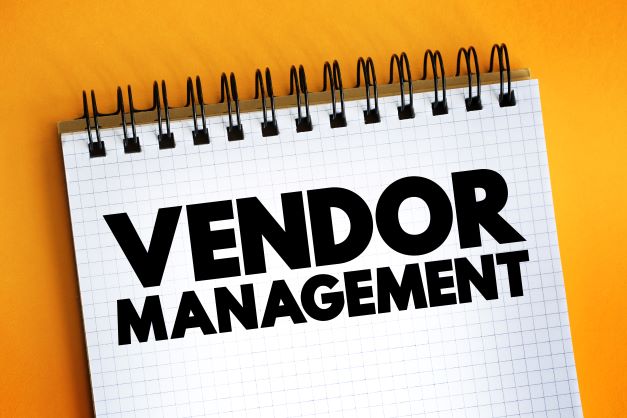A Compliance Risk Assessment Framework (CRF) is a structured approach that organizations use to identify, assess, and manage compliance risks.
This framework is critical for ensuring that a company adheres to legal standards and regulatory requirements, thereby avoiding fines, legal penalties, and damage to its reputation.
Here’s a guide to understanding the key components of a comprehensive Compliance Risk Assessment Framework:
- Scope and Objectives: Begin by defining the scope of the assessment, including the areas of the business to be reviewed and the objectives of the assessment. This sets the stage for a focused and effective risk assessment process.
- Regulatory Inventory: Compile a comprehensive list of all regulatory obligations that pertain to the business. This should cover all jurisdictions and regulatory bodies relevant to the company’s operations.
- Risk Identification: Identify potential compliance risks, which could include risks related to financial reporting, employee conduct, data protection, anti-corruption practices, and more. This step is crucial for understanding the areas where the business is most vulnerable.
- Risk Assessment: Evaluate the identified risks in terms of their likelihood and potential impact. This helps in prioritizing the risks that require the most immediate attention.
- Control Assessment: Review existing controls to determine their effectiveness in mitigating compliance risks. This includes policies, procedures, training, and monitoring systems.
- Risk Response: Develop a plan to address the most significant risks. This could involve enhancing controls, implementing new policies, or conducting additional training.
- Documentation and Reporting: Keep records of the risk assessment process and outcomes. Reporting should be done to senior management and relevant stakeholders to ensure transparency and accountability.
- Monitoring and Review: Establish a process for ongoing monitoring of compliance risks and the effectiveness of controls. The CRF should be reviewed periodically to ensure it remains current with regulatory changes and the evolving risk landscape.
- Culture and Governance: Foster a culture of compliance within the organization and ensure that governance structures support compliance efforts. Leadership should demonstrate a commitment to compliance, which is critical for the framework’s success.
A compliance risk assessment framework is crucial for organizations to identify, assess, and mitigate risks associated with non-compliance with regulatory requirements.
It is a proactive approach to managing compliance risks, which helps organizations stay ahead of the curve and avoid potential legal, financial, and reputational damage.
Understanding compliance risk is the first step in developing a compliance risk assessment framework. Compliance risk refers to the risk of legal or regulatory sanctions, financial loss, or damage to an organization’s reputation resulting from failure to comply with applicable laws, regulations, and industry standards.
Effective risk management strategies can be developed by identifying and assessing compliance risks.
Components of a compliance risk assessment framework typically include an inventory of compliance risks, a risk assessment methodology, compliance program design and implementation, third-party and vendor risk management, and monitoring and improving compliance practices.
The regulatory environment and compliance requirements are constantly evolving, and organizations need to stay up-to-date with these changes to ensure their compliance risk assessment framework remains effective.

Key Takeaways
- Compliance risk assessment framework is a proactive approach to managing compliance risks associated with non-compliance with regulatory requirements.
- Understanding compliance risk is the first step in developing a compliance risk assessment framework.
- Components of a compliance risk assessment framework typically include an inventory of compliance risks, a risk assessment methodology, compliance program design and implementation, third-party and vendor risk management, and monitoring and improving compliance practices.
Understanding Compliance Risk
Compliance risk management is an integral part of any organization. It involves identifying, evaluating, and mitigating potential losses stemming from the failure to adhere to laws, regulations, and standards, as well as internal and external policies and procedures.
Defining Compliance Risk
Compliance risk refers to the potential for an organization to suffer financial, legal, or reputational harm due to non-compliance with laws, regulations, and standards.
Compliance risk can arise from a variety of sources, including failure to adhere to regulatory compliance obligations, inadequate training of employees, lack of oversight, and ineffective risk management strategies.
Compliance risk can be categorized into three main types: legal, reputational, and financial. Legal risk arises from the potential for an organization to face legal action due to non-compliance with laws and regulations.
Reputational risk arises from the potential for an organization to suffer damage to its reputation due to non-compliance. Financial risk arises from the potential for an organization to suffer financial losses due to non-compliance.
Sources of Compliance Risk
The sources of compliance risk can vary depending on the industry, size, and nature of the organization. However, some common sources of compliance risk include:
- Regulatory compliance obligations: Compliance risk can arise from failing to adhere to regulatory compliance obligations. These obligations can come from various sources, such as government agencies, industry associations, and professional organizations.
- Laws and regulations: Compliance risk can arise from the failure to comply with laws and regulations. These laws and regulations can be federal, state, or local, covering various topics, such as data privacy, environmental protection, and labor laws.
- Internal policies and procedures: Compliance risk can arise from failing to adhere to internal policies and procedures. These policies and procedures can cover a wide range of areas, such as employee conduct, financial reporting, and information security.
Compliance risk is the potential for an organization to suffer financial, legal, or reputational harm as a result of non-compliance with laws, regulations, and standards.
The sources of compliance risk can vary depending on the industry, size, and nature of the organization, but can include regulatory compliance obligations, laws and regulations, and internal policies and procedures.
Components of a Compliance Risk Assessment Framework
A Compliance Risk Assessment Framework is a structured process that helps organizations identify, assess, and manage compliance risks.
The framework includes several components that work together to provide a comprehensive approach to managing compliance risks.
Framework Objectives
The objectives of a Compliance Risk Assessment Framework are to:
- Identify and assess compliance risks associated with an organization’s operations and activities.
- Develop a comprehensive understanding of the organization’s compliance risks.
- Develop a plan to manage identified risks.
- Ensure compliance with applicable laws, regulations, and standards.
- Provide a basis for ongoing compliance monitoring and reporting.
Scope and Boundaries
The scope and boundaries of a Compliance Risk Assessment Framework define the scope of the assessment and the boundaries of the organization’s compliance program.
The scope of the assessment should include all areas of the organization that have compliance risks. The boundaries of the compliance program should be clearly defined to ensure that all areas of the organization are covered.
Risk Identification Process
The risk identification process is a critical component of a Compliance Risk Assessment Framework. The process involves identifying and assessing compliance risks associated with the organization’s operations and activities.
The process should include the following steps:
- Identify applicable laws, regulations, and standards.
- Identify areas of the organization that have compliance risks.
- Assess the likelihood and impact of identified risks.
- Develop a risk management plan to address identified risks.
The risk identification process should be ongoing to ensure that new risks are identified and assessed as they arise. The process should also be reviewed periodically to ensure that it remains effective and relevant.
Compliance Risk Assessment Framework is an essential tool for organizations to manage compliance risks. The framework includes several components that work together to provide a comprehensive approach to managing compliance risks.
The framework objectives, scope and boundaries, and risk identification process are critical components of the framework that must be carefully considered to ensure the effectiveness of the compliance program.
Regulatory Environment and Compliance
Understanding Regulatory Compliance
Regulatory compliance is the process of adhering to laws, regulations, and guidelines set forth by regulatory bodies. The regulatory environment is constantly evolving, making it crucial for organizations to stay up-to-date with the latest regulations and comply with them.
Failure to comply with regulations can result in serious consequences, such as fines, penalties, and legal action.
To ensure regulatory compliance, organizations must establish a compliance risk assessment framework. This framework should include a comprehensive inventory of compliance risks, policies and procedures to mitigate these risks, and ongoing monitoring and reporting to ensure compliance.
Impact of Non-Compliance
The impact of non-compliance can be severe, including financial, legal, and reputational damage. Fines and penalties for non-compliance can be significant, and in some cases, can even result in the closure of a business.
In addition, non-compliance can damage an organization’s reputation, leading to a loss of trust and credibility with customers, partners, and stakeholders.
To mitigate the risk of non-compliance, organizations must prioritize compliance risk assessments and ensure that all employees are aware of the importance of compliance.
This includes providing regular training and education on regulations, laws, and policies, and establishing a culture of compliance throughout the organization.
Compliance with laws and regulations is essential for organizations to avoid regulatory risks. Organizations must establish a compliance risk assessment framework, stay up-to-date with the latest regulations, and ensure that all employees are aware of the importance of compliance.
Failure to comply with regulations can result in significant consequences, including fines, penalties, and reputational damage.
Risk Assessment Methodology
A compliance risk assessment framework is a holistic analysis of how an organization might fail to meet its regulatory compliance obligations. The evaluation identifies all the compliance duties that laws, rules, and industry standards impose upon the organization and how well its existing compliance program does or does not meet those expectations.
The risk assessment methodology is a critical component of the compliance risk assessment framework.
Risk Analysis Techniques
The risk analysis techniques used in the risk assessment methodology include both qualitative and quantitative methods.
Qualitative methods are subjective and rely on expert judgment and experience to identify and assess risks. Quantitative methods, on the other hand, use statistical analysis and mathematical models to assess risks.
The qualitative methods used in the risk assessment methodology include brainstorming, scenario analysis, and risk mapping. Brainstorming involves gathering a group of experts to identify potential risks and their impacts.
Scenario analysis involves developing hypothetical scenarios and analyzing the likelihood and consequences of each scenario. Risk mapping involves identifying the various risks faced by an organization and mapping them onto a risk matrix.
The quantitative methods used in the risk assessment methodology include statistical analysis, simulation, and modeling.
Statistical analysis involves analyzing historical data to identify trends and patterns that can be used to predict future risks. Simulation involves creating a virtual environment to test the impact of different scenarios on an organization. Modeling involves developing mathematical models to predict the likelihood and consequences of different risks.
Evaluating Likelihood and Consequences
The risk assessment methodology also involves evaluating the likelihood and consequences of each identified risk. Likelihood refers to the probability that a risk will occur.
Consequences refer to the impact that a risk will have on the organization if it does occur.
To evaluate likelihood, the risk assessment methodology considers factors such as historical data, expert judgment, and external factors that could increase or decrease the likelihood of a risk occurring.
To evaluate consequences, the risk assessment methodology considers factors such as the impact on the organization’s reputation, financial performance, and regulatory compliance.
Once the likelihood and consequences of each identified risk have been evaluated, the organization can develop a mitigation plan to reduce the likelihood and impact of each risk.
The mitigation plan should prioritize risks based on their likelihood and consequences and allocate resources accordingly.
The risk assessment methodology is a critical component of the compliance risk assessment framework. It involves using both qualitative and quantitative methods to identify and assess risks and evaluating the likelihood and consequences of each identified risk.
The risk assessment methodology enables the organization to develop a mitigation plan to reduce the likelihood and impact of each risk.
Compliance Program Design and Implementation
A robust compliance program design and implementation is critical to ensuring that an organization is able to identify and manage compliance risks effectively. The compliance program should be tailored to the organization’s specific needs and risks.
Developing Compliance Policies
Developing compliance policies is a key element of a compliance program. Policies should be clear, concise, and tailored to the organization’s specific risks.
Policies should include procedures for identifying, assessing, and managing compliance risks, as well as procedures for investigating and reporting compliance incidents.
It is important to involve key stakeholders in the development of compliance policies, including senior management, legal, and compliance personnel. Policies should be reviewed and updated regularly to ensure that they remain current and effective.
Operationalizing Compliance Procedures
Developing procedures to operationalize compliance policies is critical to the success of a compliance program. Procedures should be designed to ensure that compliance risks are identified, assessed, and managed effectively.
Operationalizing compliance procedures involves implementing processes to ensure that policies are followed, risks are identified and assessed, and incidents are investigated and reported.
This may involve implementing technology solutions to automate compliance processes, as well as training personnel on compliance policies and procedures.
Existing compliance programs should be reviewed and updated regularly to ensure that they remain effective in managing compliance risks.
This may involve conducting regular risk assessments to identify new or emerging risks, as well as reviewing policies and procedures to ensure that they remain current and effective.
Overall, a well-designed and implemented compliance program is critical to ensuring that an organization is able to identify and manage compliance risks effectively.
By developing clear policies and procedures, and operationalizing them through effective processes, organizations can minimize the risks of non-compliance and protect their reputation and bottom line.
Third-Party and Vendor Risk Management
Organizations often rely on third-party vendors to provide goods and services that are essential to their operations. However, these third-party vendors can also pose significant risks to the organization’s compliance risk management.
To mitigate these risks, it is important to have a robust third-party and vendor risk management program in place.
Assessing Third-Party Risks
Assessing third-party risks is an essential component of any third-party and vendor risk management program. This involves identifying the third-party vendors that pose the greatest risk to the organization and assessing the level of risk exposure associated with each vendor.
The assessment should consider factors such as the vendor’s financial stability, reputation, and compliance history.
One effective way to assess third-party risks is to use a risk assessment framework. There are several frameworks available, such as the Shared Assessments TPRM Framework and NIST 800-161.
These frameworks provide a structured approach to identifying and assessing third-party risks and can help organizations to prioritize their risk mitigation efforts.

Mitigating Vendor Risks
Once the third-party risks have been identified and assessed, the next step is to mitigate those risks. This can involve a range of measures, such as implementing controls to monitor and manage vendor performance, conducting due diligence on new vendors, and regularly reviewing and updating vendor contracts.
One effective way to mitigate vendor risks is to implement a vendor risk management program. This program should include policies and procedures for managing vendor risks, as well as guidelines for selecting and monitoring vendors.
The program should also include regular training for employees on how to identify and mitigate vendor risks.
Third-party and vendor risk management is an essential component of any compliance risk assessment framework. By assessing and mitigating third-party risks, organizations can reduce their exposure to compliance risks and ensure that they are able to meet their regulatory obligations.
Monitoring and Improving Compliance Practices
Compliance risk assessment framework is a critical tool for identifying and mitigating risks associated with non-compliance.
However, it is not enough to simply identify and mitigate risks; organizations must also monitor and improve their compliance practices. In this section, we will discuss the role of internal audit and feedback in continuous improvement.
Role of Internal Audit
Internal audit plays a critical role in monitoring and improving compliance practices. Internal auditors provide independent assurance that the organization’s compliance practices are effective and efficient.
They evaluate the effectiveness of internal controls and provide recommendations for improvement.
One key area where internal audit can add value is in the testing of compliance controls. Internal auditors can test the effectiveness of controls and identify areas where controls are weak or ineffective.
They can also provide recommendations for improving controls to mitigate compliance risks.
Feedback and Continuous Improvement
Feedback is an essential component of continuous improvement. Organizations should seek feedback from employees, customers, and other stakeholders to identify areas where compliance practices can be improved. Feedback can be obtained through surveys, focus groups, and other means.
Once feedback is obtained, organizations should use it to identify areas for improvement. They should develop action plans to address identified issues and monitor progress towards achieving improvement goals.
Continuous improvement is an ongoing process, and organizations should regularly review and update their compliance practices to ensure they remain effective and efficient.
Monitoring and improving compliance practices is critical for mitigating compliance risks. Internal audit plays a critical role in monitoring compliance practices, while feedback is essential for continuous improvement.
Organizations that prioritize monitoring and improving their compliance practices will be better positioned to avoid compliance failures and maintain their reputation.
Technology’s Role in Compliance Risk Management
As businesses continue to expand and operate globally, compliance risk management becomes increasingly complex.
Technology has played a crucial role in simplifying and streamlining compliance risk management, making it easier for companies to stay compliant with the ever-evolving regulations.
Leveraging Compliance Software
One of the most significant ways technology has impacted compliance risk management is through the use of compliance software.
Compliance software enables companies to automate compliance processes, reducing the risk of human error and ensuring that all compliance requirements are met.
Compliance software can also provide companies with real-time updates on regulatory changes, allowing them to quickly adapt to new requirements.
This reduces the risk of non-compliance and helps companies avoid costly fines and penalties.
Data Privacy and Cybersecurity
Data privacy and cybersecurity regulations have become increasingly important in recent years, with the rise in data breaches and cyber attacks.
Technology has played a crucial role in helping companies comply with these regulations, with the use of encryption and other security measures.
Companies can also use technology to monitor their data and identify potential risks. This can help them implement measures to protect their data and ensure compliance with data privacy regulations.

Global Data Privacy
Global data privacy regulations, such as the General Data Protection Regulation (GDPR), have made compliance risk management even more complex.
Technology has played a crucial role in helping companies comply with these regulations, with the use of compliance software and other tools.
Companies can also use technology to ensure that their data is stored and processed in compliance with global data privacy regulations. This can help them avoid costly fines and penalties and maintain customer trust.
Overall, technology has played a crucial role in simplifying and streamlining compliance risk management, making it easier for companies to stay compliant with the ever-evolving regulations.
By leveraging compliance software and other tools, companies can reduce the risk of non-compliance and avoid costly fines and penalties.
Responding to Compliance Risk Events
When a compliance risk event occurs, it is important to have a plan in place to respond promptly and effectively. The following subsections outline some key considerations when responding to compliance risk events.
Incident Response Planning
Having an incident response plan in place can help organizations respond quickly and effectively to compliance risk events. An incident response plan should include the following elements:
- Identification of key stakeholders and their roles and responsibilities.
- Procedures for reporting and documenting incidents.
- Steps for containing and mitigating the incident.
- Communication protocols for notifying stakeholders and the public.
- Procedures for reviewing and updating the incident response plan.
By having a well-defined incident response plan, organizations can minimize the impact of compliance risk events and reduce the risk of future incidents.
Remediation and Legal Implications
Once a compliance risk event has been identified and contained, organizations should take steps to remediate any damage that has been caused. This may involve:
- Conducting a root cause analysis to identify the underlying cause of the incident.
- Implementing corrective actions to prevent future incidents.
- Providing restitution to affected parties.
- Communicating with stakeholders and the public about the incident and the steps to remediate it.
In addition to the remediation steps, organizations should also consider the legal implications of the compliance risk event.
Depending on the severity of the incident, organizations may face civil lawsuits, regulatory enforcement actions, or other legal consequences. It is important to work with legal counsel to understand the potential legal impact of the incident and to take appropriate steps to mitigate any legal risks.
Overall, responding to compliance risk events requires a thoughtful and strategic approach. By having an incident response plan in place and taking prompt and effective remediation steps, organizations can minimize the impact of compliance risk events and reduce the risk of future incidents.
Role of Leadership in Compliance Risk Management
Compliance risk management is a critical aspect of any organization, and it is the responsibility of the leadership to ensure that the organization’s compliance risks are identified, assessed, and managed effectively.
In this section, we will discuss the role of leadership in compliance risk management.
Expectations from Executives
The executives of an organization play a crucial role in compliance risk management. They are responsible for setting the tone at the top and establishing a culture of compliance throughout the organization.
The executives must ensure that the organization’s compliance program is designed to identify, assess, and manage compliance risks effectively.
The executives should also ensure that the organization has a Chief Compliance Officer (CCO) who is responsible for overseeing the compliance program.
The CCO should report directly to the executives and have the authority to escalate compliance issues to the highest level of the organization.
Compliance as a Strategic Priority
Compliance should be a strategic priority for the organization, and the executives should ensure that compliance risks are considered in the organization’s strategic planning process.
The executives should also ensure that the compliance program is integrated into the organization’s overall risk management framework.
The executives should ensure that the organization’s compliance program is adequately resourced and that the compliance team has the necessary skills and expertise to manage compliance risks effectively.

The executives should also ensure that the compliance program is subject to regular monitoring and review to ensure that it remains effective and up-to-date.
The leadership of an organization plays a critical role in compliance risk management. The executives should set the tone at the top, establish a culture of compliance, ensure that the organization has a CCO, and integrate compliance into the organization’s strategic planning process.
Compliance should be a strategic priority for the organization, and the compliance program should be adequately resourced, monitored, and reviewed regularly.

Chris Ekai is a Risk Management expert with over 10 years of experience in the field. He has a Master’s(MSc) degree in Risk Management from University of Portsmouth and is a CPA and Finance professional. He currently works as a Content Manager at Risk Publishing, writing about Enterprise Risk Management, Business Continuity Management and Project Management.
